
Yigo: The Tranquil Gateway to Guam's Natural Wonders
Discover Yigo, Guam's tranquil village, offering natural beauty, rich history, and authentic Chamorro culture—a perfect escape for nature lovers and history buffs.
Yigo, located in the northern part of Guam, is a paradise for nature lovers and history enthusiasts alike. This charming village offers a peaceful retreat from the bustling tourist spots while still providing a wealth of experiences to enjoy. Yigo is known for its lush landscapes, scenic vistas, and a rich cultural heritage that reflects Guam's unique blend of influences. One of the highlights of Yigo is its proximity to Ritidian Point, a stunning natural reserve with pristine beaches, limestone forests, and ancient Chamorro artifacts. Visitors can enjoy guided nature walks, bird watching, and breathtaking ocean views. This protected area is also home to endangered species and offers a glimpse into Guam's ecological diversity. History buffs will appreciate the historical significance of Yigo, especially its role during World War II. The South Pacific Memorial Peace Park stands as a poignant reminder of the island's wartime history, offering reflective spaces and informative displays. Additionally, the nearby Andersen Air Force Base provides further insight into Guam's strategic importance. Yigo's local markets and eateries offer a taste of authentic Chamorro cuisine, making it a delightful destination for food lovers. From traditional dishes like kelaguen and red rice to fresh seafood, the flavors of Guam are sure to tantalize your taste buds. Coupled with the warm hospitality of the locals, Yigo provides a welcoming and enriching experience for all who visit.
Local tips in Yigo
- Visit Ritidian Point early in the morning to avoid the heat and enjoy serene views.
- Check local weather forecasts before planning outdoor activities, as Guam's weather can be unpredictable.
- Wear comfortable walking shoes for exploring the natural reserves and historical sites.
- Try the local Chamorro dishes at the village markets for an authentic culinary experience.
- Respect local customs and traditions, especially when visiting cultural and historical sites.
Yigo: The Tranquil Gateway to Guam's Natural Wonders
Yigo, located in the northern part of Guam, is a paradise for nature lovers and history enthusiasts alike. This charming village offers a peaceful retreat from the bustling tourist spots while still providing a wealth of experiences to enjoy. Yigo is known for its lush landscapes, scenic vistas, and a rich cultural heritage that reflects Guam's unique blend of influences. One of the highlights of Yigo is its proximity to Ritidian Point, a stunning natural reserve with pristine beaches, limestone forests, and ancient Chamorro artifacts. Visitors can enjoy guided nature walks, bird watching, and breathtaking ocean views. This protected area is also home to endangered species and offers a glimpse into Guam's ecological diversity. History buffs will appreciate the historical significance of Yigo, especially its role during World War II. The South Pacific Memorial Peace Park stands as a poignant reminder of the island's wartime history, offering reflective spaces and informative displays. Additionally, the nearby Andersen Air Force Base provides further insight into Guam's strategic importance. Yigo's local markets and eateries offer a taste of authentic Chamorro cuisine, making it a delightful destination for food lovers. From traditional dishes like kelaguen and red rice to fresh seafood, the flavors of Guam are sure to tantalize your taste buds. Coupled with the warm hospitality of the locals, Yigo provides a welcoming and enriching experience for all who visit.
When is the best time to go to Yigo?
Iconic landmarks you can’t miss
Cetti Bay Overlook
Explore the stunning beauty of Cetti Bay Overlook in Guam, a perfect destination for hiking and breathtaking ocean views.

Ritidian Point
Discover the idyllic shores of Ritidian Point, where stunning beaches meet vibrant marine life, perfect for swimming and snorkeling adventures.

Guam National Wildlife Refuge
Explore Guam National Wildlife Refuge: A breathtaking sanctuary of diverse wildlife and stunning landscapes, perfect for nature lovers and eco-tourists.
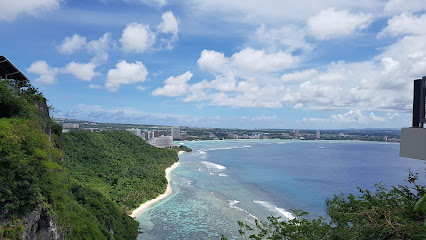
Fort Santa Agueda
Explore Fort Santa Agueda, a historic landmark in Guam offering stunning views of Agana Bay and a deep dive into the island's rich history.

Fish Eye Underwater Observatory
Discover the wonders of Guam's marine life at Fish Eye Underwater Observatory, where adventure meets education beneath the waves.

Asan Bay Overlook
Discover the tranquil beauty and historical significance at Asan Bay Overlook, a must-visit memorial park in Guam.

Magellan Monument
Discover the Magellan Monument in Guam, a historic landmark that celebrates exploration and offers breathtaking views of the Pacific coastline.
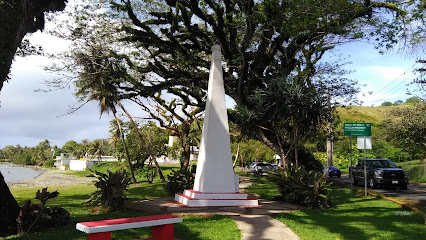
Pagat Cave Trailhead
Explore the breathtaking Pagat Cave Trailhead in Yigo, Guam, a hidden gem for nature lovers and adventure enthusiasts seeking stunning landscapes and unique experiences.

Guam Veterans Memorial Humåtak
Discover the Guam Veterans Memorial Humåtak, a moving tribute that honors the island's brave veterans amidst stunning natural beauty.

Pagat Cave
Explore the breathtaking beauty and cultural richness of Pagat Cave, a must-visit hiking area in Yigo, Guam, perfect for adventurers and nature lovers.

Archbishop Felixberto Flores Memorial Circle
Explore the serene beauty of Archbishop Felixberto Flores Memorial Circle in Oka, Guam – a tranquil landmark celebrating local heritage and culture.

Yigo Guam Temple
Explore the tranquil beauty of Yigo Guam Temple, a serene spiritual haven amidst lush landscapes, inviting all to experience peace and reflection.

Fouha Rock | Fu'una and Puntan
Discover the enchanting Fouha Rock in Guam, a historical landmark that offers stunning views and a deep connection to the island's rich cultural heritage.

Lost Boys Point
Explore Lost Boys Point in Guam: A serene historical landmark offering stunning ocean views and rich cultural heritage, perfect for relaxation and exploration.

Agaña Historic District
Discover the Agaña Historic District, a captivating blend of Guam's cultural heritage and historical significance in a picturesque setting.

Unmissable attractions to see
Fort Nuestra Señora de la Soledad
Explore the captivating history and stunning views at Fort Nuestra Señora de la Soledad, a top tourist attraction in Guam.

Karera at SandCastle
Experience the captivating performances and stunning ambiance of Karera at SandCastle, a premier theater attraction in Tumon, Guam.

Taotao Tasi Guam
Experience the vibrant culture of Guam at Taotao Tasi, where delicious BBQ meets captivating cultural performances by the beach.

Talo'fo'fo' Falls
Experience the breathtaking beauty of Talo'fo'fo' Falls in Guam, a serene oasis perfect for relaxation, adventure, and unforgettable memories.

Chamorro Night Market
Discover the flavors and culture of Guam at the Chamorro Night Market, a vibrant celebration of local food, crafts, and entertainment every Wednesday evening.

Onward Mangilao Golf Club
Experience world-class golfing at Onward Mangilao Golf Club in Guam, where stunning views and lush landscapes meet challenging play.

Country Club of the Pacific
Experience world-class golfing at the Country Club of the Pacific in Guam, where stunning views meet challenging courses for all skill levels.

Senator Angel Leon Guerrero Santos Latte Stone Memorial Park
Explore Guam's rich heritage at the Senator Angel Leon Guerrero Santos Latte Stone Memorial Park, where history meets natural beauty.

Guam International Raceway
Discover the exhilarating world of speed and adrenaline at Guam International Raceway, the premier car racing destination in Yigo, Guam.

Latte of Freedom
Explore Guam's cultural heritage at the Latte of Freedom, where history and tradition come alive in a captivating museum experience.
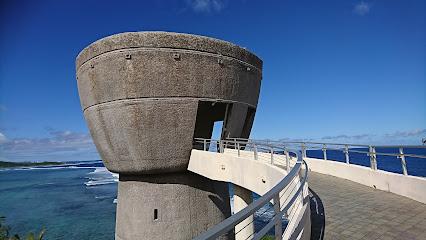
Guam Ocean Adventures
Discover the vibrant marine life of Guam with unforgettable diving and snorkeling experiences at Guam Ocean Adventures, a premier dive shop and tour operator.

샌 안토니오 다리
Explore the historic Soledad Point in Guam, where stunning ocean views meet rich cultural heritage in a serene environment.

Umatac Bridge
Explore the Umatac Bridge in Guam, where breathtaking views and rich history come together in a stunning landmark.

Our Lady of Purification Catholic Church
Discover the architectural beauty and spiritual serenity of Our Lady of Purification Catholic Church in Guam, a must-visit for cultural enthusiasts.

Guam Sunset Cruise Dinner & Dolphin Watching
Savor a delightful dinner while cruising the stunning waters of Guam, watching playful dolphins and breathtaking sunsets.

Essential places to dine
Meskla Dos - Upper Tumon
Discover delicious burgers with a local twist at Meskla Dos in Upper Tumon, Guam – where every bite tells a story.

Proa Restaurant
Experience authentic Chamorro cuisine at Proa Restaurant in Tumon – where tradition meets flavor in every dish.

Pika's Cafe
Discover authentic flavors at Pika's Cafe in Upper Tumon – your go-to spot for delicious breakfast and lunch on Guam.

Ruby Tuesday Restaurant
Experience delectable American cuisine at Ruby Tuesday in Apotgan, Guam - where local flavors meet classic comfort food.

The Kracked Egg
Experience the best breakfast and brunch at The Kracked Egg in Tumon - where local flavors meet culinary creativity.
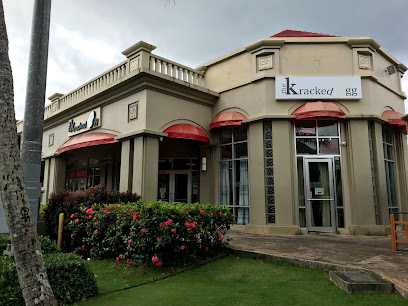
Churrasco Brazilian Steakhouse and Salad Bar
Experience the vibrant flavors of Brazil at Churrasco Brazilian Steakhouse in Tumon, Guam – where succulent grilled meats meet tropical ambiance.

Onigiri Seven Japanese Food Stand
Experience authentic Japanese flavors at Onigiri Seven - Tumon's favorite spot for sushi lovers seeking affordable delights.

Ben N' Yan's
Experience authentic Filipino cuisine at Ben N' Yan's in Upper Tumon - where every meal is a celebration of flavor and culture.

Three Squares Restaurant
Experience the rich culinary heritage of Guam at Three Squares Restaurant - where local flavors meet modern dining.

McDonald's
Experience the comfort of familiar flavors at McDonald's Yigo—your go-to spot for fast food delights on your Guam adventure.

Primo Pizzakaya
Discover delicious gourmet pizzas and vibrant flavors at Primo Pizzakaya in Tumon, Guam - your ultimate pizza destination.

Olive Garden Italian Restaurant
Experience authentic Italian cuisine at Olive Garden in Guam - where family dining meets rich Mediterranean flavors.

Alfredo's Steakhouse
Indulge in gourmet steaks and exquisite dining at Alfredo's Steakhouse in Tumon, Guam - a true culinary delight amidst tropical beauty.

Pasak Chicken Yigo
Experience authentic Guamanian flavors at Pasak Chicken Yigo – where delicious chicken dishes meet local hospitality.

Café Kitchen
Discover delightful flavors at Café Kitchen in Tumon - the perfect family-friendly dining destination with local cuisine and stunning views.
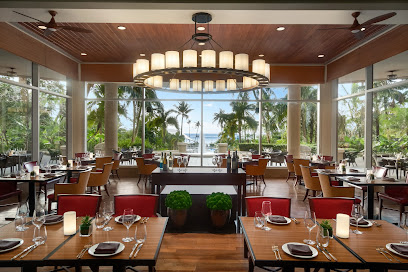
Markets, malls and hidden boutiques
Pay-Less Supermarkets
Explore Pay-Less Supermarkets in Guam for fresh local produce, international goods, and a unique shopping experience that captures the spirit of the island.

Shop 4 Less
Shop 4 Less in Guam: A treasure trove for crafts, office supplies, and party essentials, perfect for every tourist's needs.

Peggy's
Explore Peggy's in Yigo, Guam - a craft store bursting with local artistry and unique handmade treasures for every traveler.
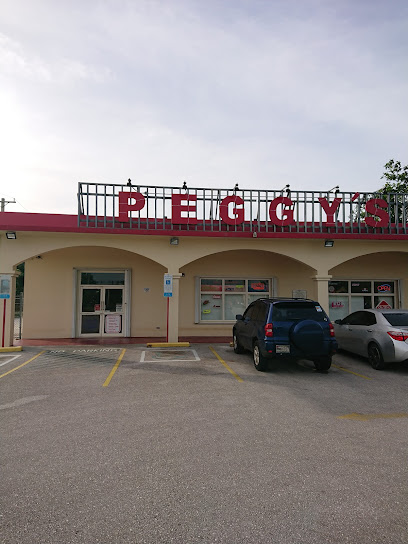
Hafa Adai Market
Explore Hafa Adai Market in Yigo, Guam, for local flavors, fresh produce, and unique culinary delights that celebrate the island's rich heritage.

SM Island Guam
Experience the best of local and international shopping at SM Island Guam, where culture meets retail in a vibrant department store.

G Mart
Explore G Mart in Yigo, Guam – your premier grocery destination for fresh produce, local delicacies, and everyday essentials.

Gayinero Market
Experience the vibrant culture and local flavors at Gayinero Market, Yigo's bustling grocery store offering fresh produce and unique Guamanian delicacies.

Ching Brothers Enterprises
Explore Ching Brothers Enterprises in Guam for unique home goods and local treasures that enhance your living space.

GIFT GUAM
Discover unique souvenirs and local crafts at Gift Guam, the ultimate shopping destination for tourists in Tumon.

American Grocery
Explore a diverse selection of local and international products at American Grocery in Yigo, Guam, a shopper's paradise for every traveler.

Hills Market
Discover local flavors and essentials at Hills Market in Yigo, your go-to grocery store for a taste of Guam.

Hidden-Treasures-Thrift-Store-and-Boutique
Explore Hidden Treasures Thrift Store and Boutique in Guam for unique clothing and accessories that reflect your personal style.

U2 fashion Home Mart
Explore unique home goods at U2 Fashion Home Mart in Guam, where local charm meets stylish living essentials for every taste.

YJ Market
Discover the flavors of Guam at YJ Market, a local grocery store offering fresh produce, unique snacks, and a taste of authentic island culture.

Luxe Vape Junction Lounge
Explore Luxe Vape Junction Lounge in Yigo, Guam for a premium selection of vaporizers and a welcoming atmosphere perfect for enthusiasts and newcomers alike.

Essential bars & hidden hideouts
The Beach Restaurant & Bar Guam
Experience the vibrant flavors and stunning views at The Beach Restaurant & Bar Guam, where every meal is a beachfront celebration.

Ruby Tuesday Restaurant
Experience the taste of America at Ruby Tuesday Restaurant in Guam, where great food meets a warm atmosphere for unforgettable dining.

Porky's
Discover the vibrant nightlife at Porky's in Tumon, Guam, where delicious drinks and a lively atmosphere await.

Pasak Chicken Yigo
Discover the mouth-watering chicken delights at Pasak Chicken in Yigo, Guam, where local flavors meet friendly service in a cozy atmosphere.

Shamrocks Sports Pub
Experience the lively atmosphere of Shamrocks Sports Pub in Tumon, Guam, where great food and fun activities await every visitor.

Sao Mai Restaurant
Discover the essence of Vietnamese cuisine at Sao Mai Restaurant in Yigo, Guam, where every dish tells a story of flavor and tradition.

VietBowl
Discover the authentic taste of Vietnamese cuisine at VietBowl in Yigo, Guam, where delicious dishes meet affordable prices in a vibrant atmosphere.

Spring Chinese Kitchen II
Experience the best of Chinese cuisine at Spring Chinese Kitchen II, Yigo, Guam, where traditional flavors meet a warm atmosphere.

Old Traditions
Experience the vibrant nightlife at Old Traditions, a lively bar in Tumon, Guam, where local culture meets a welcoming atmosphere.

Gecko Grill
Discover authentic Guamanian cuisine at Gecko Grill in Yigo, where local flavors meet a friendly atmosphere, perfect for every traveler.
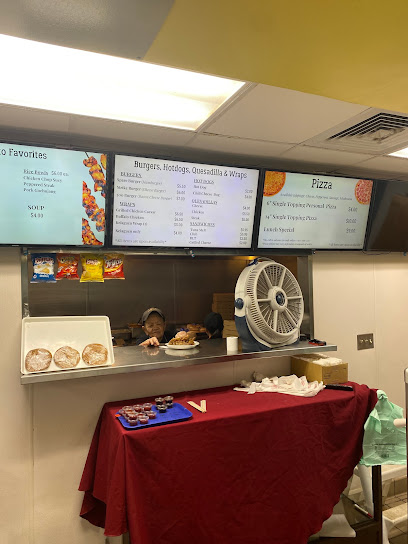
Froots
Discover the vibrant tastes of Guam at Froots, where fresh smoothies and tropical dishes await in a charming restaurant setting.

Livehouse
Explore the lively atmosphere, creative cocktails, and unforgettable nightlife at Livehouse, a premier bar in Tumon, Guam.

Somjai
Discover the authentic flavors of Thailand at Somjai, a delightful Thai restaurant located in the vibrant University of Guam.

Uptown Pub & Grill
Discover the vibrant flavors of Guam at Uptown Pub & Grill, where local ingredients meet culinary creativity in a lively atmosphere.

소주 SOJU
Discover the authentic taste of Guam at 소주 SOJU, a country food restaurant in Harmon Industrial Park, where local flavors come alive.

Local Phrases
-
- HelloHafa Adai
[hah-fah ah-dai] - GoodbyeHåfa Adios
[hah-fah ah-dee-ose] - YesHao
[how] - NoTi
[tee] - Please/You're welcomePor Favor
[pore fah-vore] - Thank youSi Yu'us Ma'åse
[see yoo-oos mah-ah-seh] - Excuse me/SorryDispensa
[dees-pehn-sah] - How are you?Cómo estás?
[koh-moh ehs-tahs] - Fine. And you?Maolek. Y ti?
[mah-oh-lek. ee tee] - Do you speak English?Håfa i isla i inglés?
[hah-fah ee ee-slah ee een-glays] - I don't understandTi hu guaha
[tee hoo gwah-hah]
- HelloHafa Adai
-
- I'd like to see the menu, pleaseLao'ån menu put i, si Yu'us Ma'åse
[lao-ahn meh-noo poot ee, see yoo-oos mah-ah-seh] - I don't eat meatTi manu i karni
[tee mah-noo ee kahr-nee] - Cheers!Biba!
[bee-bah] - I would like to pay, pleaseLao'ån put i, si Yu'us Ma'åse
[lao-ahn poot ee, see yoo-oos mah-ah-seh]
- I'd like to see the menu, pleaseLao'ån menu put i, si Yu'us Ma'åse
-
- Help!Ayudame!
[ah-yoo-dah-meh] - Go away!Mungge!
[muhng-geh] - Call the Police!Llamame a la Policia!
[yah-mah-meh ah lah poh-lee-see-ah] - Call a doctor!Llamame a un doctor!
[yah-mah-meh ah oon dohk-tor] - I'm lostKao guaha
[kah-oh gwah-hah] - I'm illKao na'chu'
[kah-oh nah-choo]
- Help!Ayudame!
-
- I'd like to buy...Lao'ån put i...
[lao-ahn poot ee] - I'm just lookingTi manu ha'
[tee mah-noo hah] - How much is it?Ångok este?
[ahng-ohk ehs-teh] - That's too expensiveMås takana
[mahs tah-kah-nah] - Can you lower the price?Mås båba i preis?
[mahs bah-bah ee preys]
- I'd like to buy...Lao'ån put i...
-
- What time is it?Kuantos na ora?
[kwan-tohs nah oh-rah] - It's one o'clockManayon i ora
[mah-nah-yohn ee oh-rah] - Half past (10)Mamong (10)
[mah-mohng (10)] - MorningMananågåhi
[mah-nah-nuh-gah-hee] - AfternoonManhåfa
[mah-nhah-fah] - EveningManlalåhi
[mah-nlah-lah-hee] - YesterdayKåum
[kah-oom] - TodayÑora
[nyoh-rah] - TomorrowBukåm
[boo-kahm] - 1Unu
[oo-noo] - 2Dos
[dose] - 3Tres
[trehs] - 4Kåtro
[kah-tro] - 5Sinko
[seen-koh] - 6Sais
[sah-ees] - 7Siete
[see-eh-teh] - 8Ocho
[oh-choh] - 9Nuebi
[noo-eh-bee] - 10Dies
[dees]
- What time is it?Kuantos na ora?
-
- Where's a/the...?Maimaga i...
[mah-ee-mah-gah ee] - What's the address?Kuanto direksion?
[kwan-toh dee-rehk-see-ohn] - Can you show me (on the map)?Mås li'e (gi mapå)?
[mahs lee-eh (gee mah-pah)] - When's the next (bus)?Kuando åntes?
[kwahn-doh ahn-tehs] - A ticket (to ....)Un ticket (para ....)
[oon tee-keh (pah-rah)]
- Where's a/the...?Maimaga i...
History of Yigo
-
Yigo, like much of Guam, was originally settled by the Chamorro people, an Austronesian-speaking population. Archaeological evidence suggests that the area has been inhabited for over 4,000 years. The Chamorro people lived in small villages and engaged in fishing, agriculture, and intricate weaving. They built latte stones, which are large stone pillars that served as the foundations for their elevated homes.
-
In 1521, Ferdinand Magellan's expedition arrived in Guam, marking the beginning of Spanish influence. By the late 17th century, Spain had established colonial rule over the island. Yigo, like other parts of Guam, experienced significant changes under Spanish rule, including the introduction of Christianity and new agricultural practices. The Spanish also built several churches and forts in the region.
-
Yigo played a crucial role during World War II. After Japan occupied Guam in 1941, the area became a focal point for resistance and guerilla activities. In July 1944, the Battle of Yigo was one of the final and fiercest confrontations during the liberation of Guam by American forces. The battle led to heavy casualties and significant destruction but ultimately resulted in the liberation of the island from Japanese occupation.
-
After World War II, Yigo, along with the rest of Guam, underwent extensive reconstruction. The U.S. military established several bases on the island, including Andersen Air Force Base, located in Yigo. This brought economic growth and modernization to the area. Infrastructure such as roads, schools, and hospitals were built, transforming Yigo into a more developed and prosperous region.
-
In recent decades, there has been a resurgence of interest in Chamorro culture and heritage in Yigo. Efforts have been made to preserve traditional practices, language, and arts. Festivals and cultural events celebrate Chamorro identity, and educational programs aim to teach younger generations about their rich history. Modern Yigo is a blend of its ancient heritage and contemporary influences, making it a unique and vibrant community.
Yigo Essentials
-
Yigo is located in the northern part of Guam. The nearest international airport is Antonio B. Won Pat International Airport (GUM) in Tamuning, approximately 20 miles south of Yigo. From the airport, you can take a taxi, rent a car, or use a shuttle service to reach Yigo. The drive typically takes around 30 to 40 minutes.
-
Yigo can be explored by various means of transportation. Renting a car is the most convenient option for getting around, as public transportation is limited. Taxis are available but can be expensive for longer trips. For those who prefer public transport, the Guam Regional Transit Authority (GRTA) operates buses that connect Yigo to other parts of the island, though the schedules can be infrequent.
-
The official currency in Guam is the US Dollar (USD). Credit cards are widely accepted in hotels, restaurants, and larger stores. However, it is advisable to carry some cash, especially for smaller businesses and local markets. ATMs are available throughout Yigo for withdrawing cash when needed.
-
Yigo is generally a safe destination for tourists. However, it is always wise to take standard precautions. Avoid walking alone at night in unfamiliar areas and keep your belongings secure in crowded places. There are no specific high-crime areas targeting tourists in Yigo, but staying vigilant and aware of your surroundings is advisable.
-
In case of emergency, dial 911 for immediate assistance. There are local police stations and medical facilities available in Yigo. It is recommended to have travel insurance that covers medical emergencies. For minor health issues, pharmacies in Yigo can provide over-the-counter medications.
-
Fashion: Do dress comfortably and modestly, especially when visiting religious sites. Avoid wearing overly revealing clothing. Religion: Do respect local customs and traditions. Always remove your shoes when entering someone's home or certain religious sites. Public Transport: Do be respectful and give up your seat to elderly passengers. Don't eat or drink on public transport. Greetings: Do greet people with a friendly 'Hafa Adai' (Hello). A handshake is also common. Eating & Drinking: Do try local delicacies and accept food offerings graciously. Don't refuse hospitality, as it is considered impolite.
-
To experience Yigo like a local, visit local markets where you can buy fresh produce and traditional Chamorro goods. Engage with locals, as they are often friendly and willing to share stories about the area's history and culture. Don't miss visiting Ritidian Point, which offers beautiful beaches and ancient Chamorro cave art. For a unique experience, explore the Yigo Amusement Park and get a glimpse of local life.
Trending Landmark in Yigo
-
Cetti Bay Overlook
-
Ritidian Point
-
Guam National Wildlife Refuge
-
Fort Santa Agueda
-
Fish Eye Underwater Observatory
-
Asan Bay Overlook
-
Magellan Monument
-
Pagat Cave Trailhead
-
Guam Veterans Memorial Humåtak
-
Pagat Cave
-
Archbishop Felixberto Flores Memorial Circle
-
Yigo Guam Temple
-
Fouha Rock | Fu'una and Puntan
-
Lost Boys Point
-
Agaña Historic District
Nearby Cities to Yigo
-
Things To Do in Dededo
-
Things To Do in Mangilao
-
Things To Do in Tamuning
-
Things To Do in Tumon
-
Things To Do in Hagåtña
-
Things To Do in Sinajana
-
Things To Do in Agana Heights
-
Things To Do in Santa Rita
-
Things To Do in Agat
-
Things To Do in Koblerville
-
Things To Do in Saipan
-
Things To Do in Kagman
-
Things To Do in Garapan
-
Things To Do in Capital Hill
-
Things To Do in San Roque







